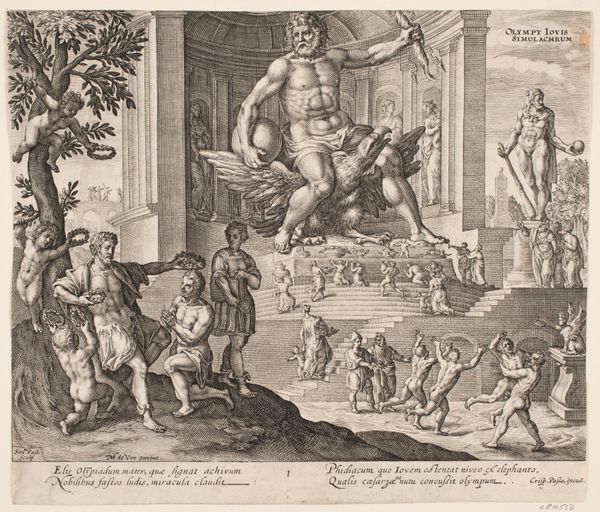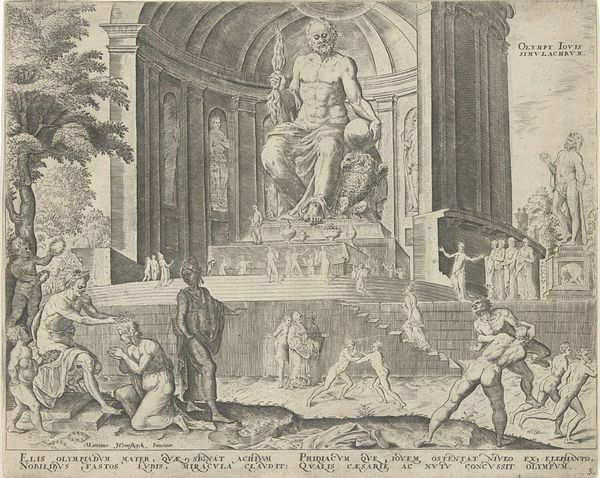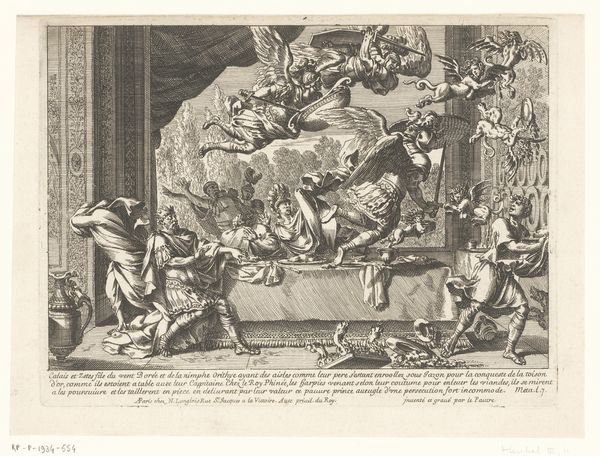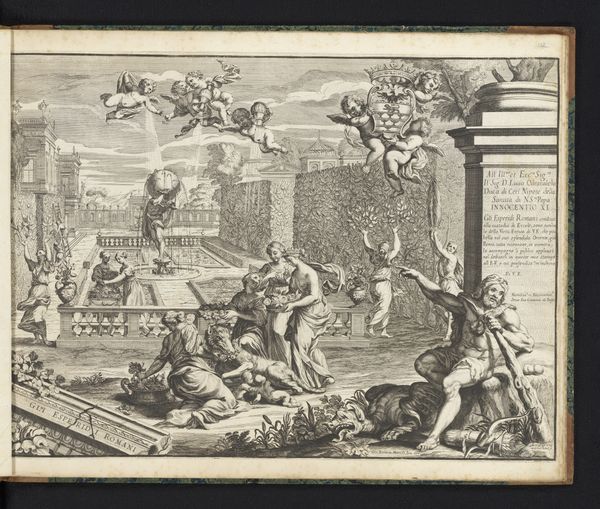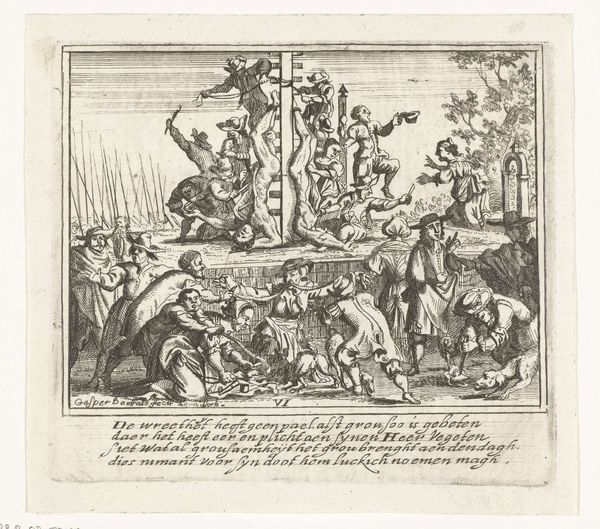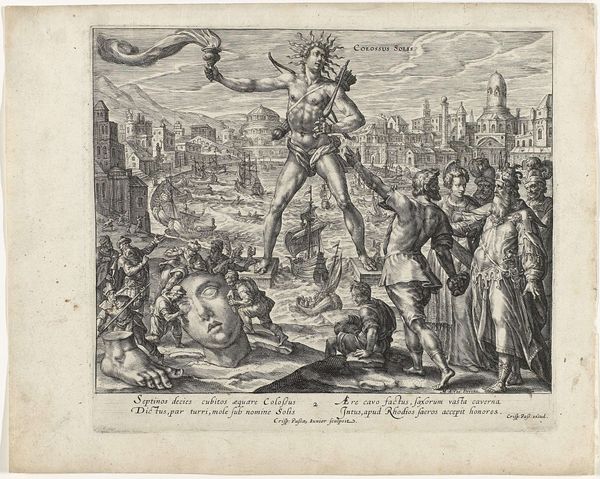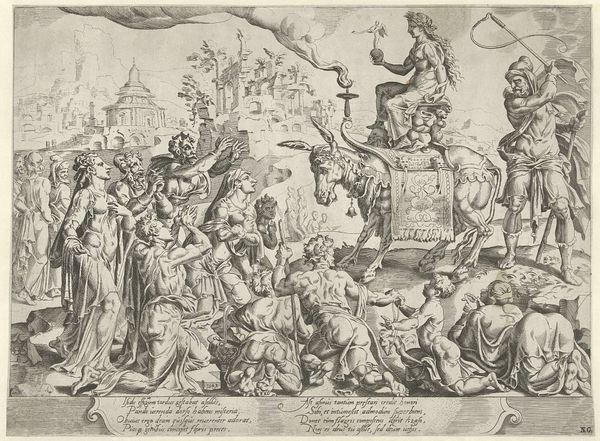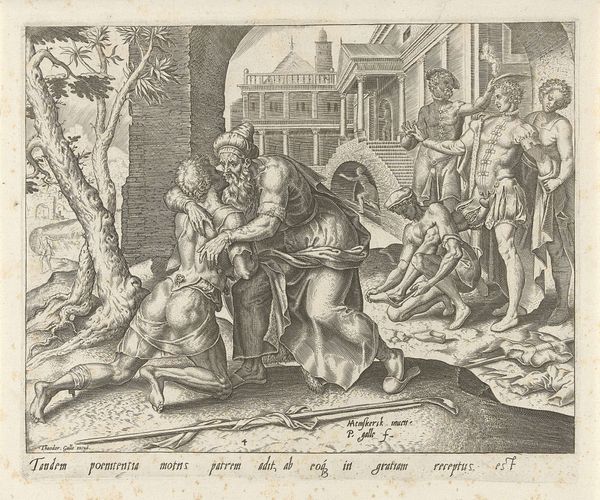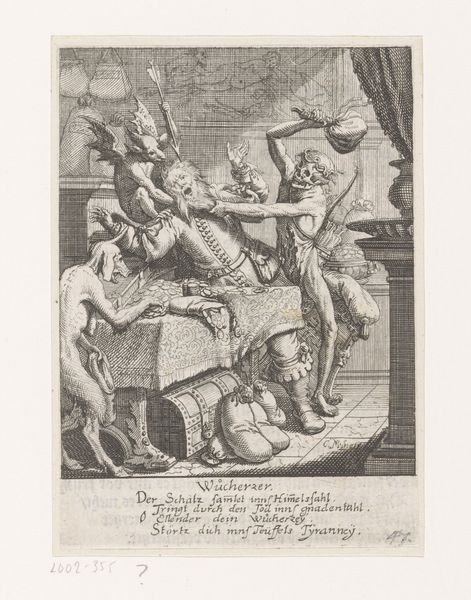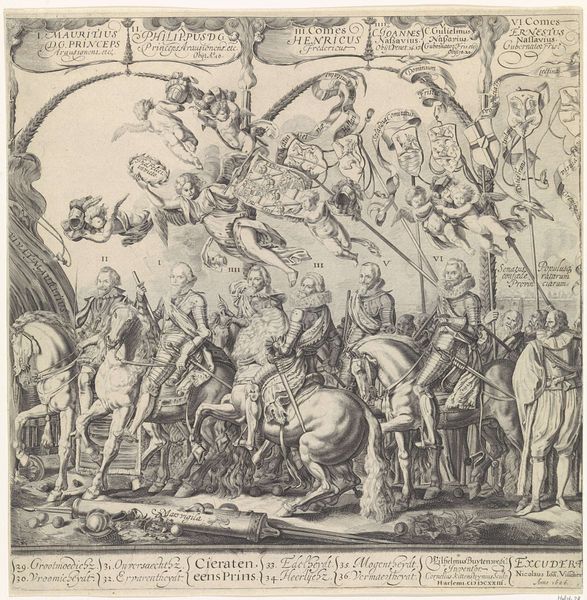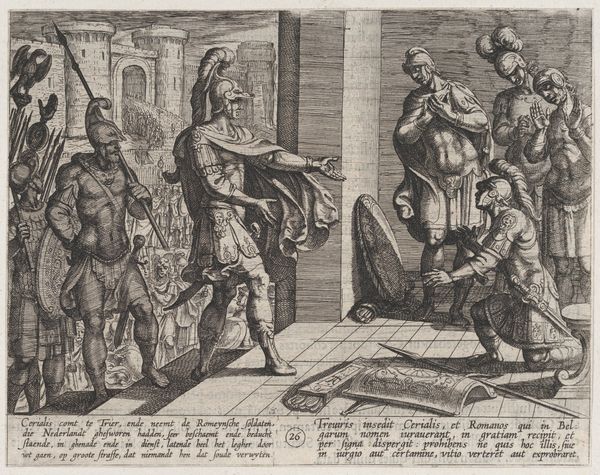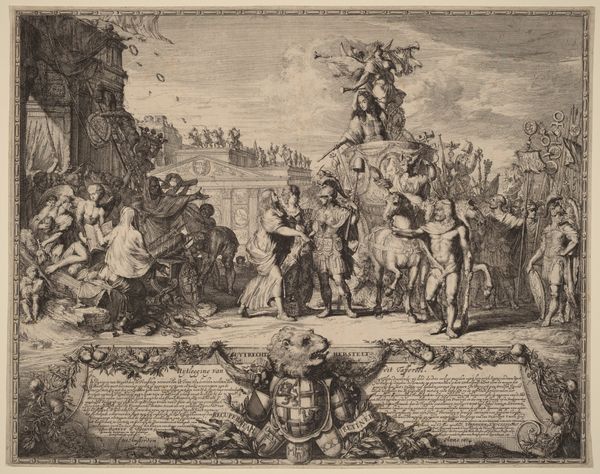
print, engraving
#
allegory
#
baroque
# print
#
old engraving style
#
classical-realism
#
figuration
#
history-painting
#
engraving
Dimensions: height 251 mm, width 320 mm, height 214 mm, width 251 mm
Copyright: Rijks Museum: Open Domain
Curator: The print before us, "Het beeld van Jupiter in Olympia" or "The statue of Jupiter in Olympia," created around 1614 by Simon van de Passe, is an intriguing example of Baroque engraving, held in the Rijksmuseum's collection. Editor: Whoa. Talk about overwhelming! All those tiny figures, that huge Zeus... it's like a scene from a deity-themed amusement park. And the overall mood is, uh, imposing, to say the least! Curator: Indeed. Van de Passe has depicted a veritable micro-city celebrating the statue. Consider the layers of symbolism here. Zeus, supreme ruler, seated upon what looks like a winged griffin of some kind, dominates the scene, embodying absolute authority and divine right. This taps into a cultural memory of the ancient world. Editor: Absolutely! Though that griffin looks more like it’s auditioning for a role in a Monty Python sketch. And everyone at the bottom looks like they are partying at the bottom of Zeus' enormous staircase. Is this about power? It looks like about being incredibly busy and making the climb worthwhile. Curator: I find it striking how van de Passe manages to create a sense of scale with mere lines. You're absolutely right about the "busy" atmosphere! It's a scene teeming with life – note the processions, sacrifices, and athletic games alluded to below the statue of Zeus. He’s using the print not only to depict a historical recreation but to create a total vision. Editor: Yes, that chaotic joy seems very much like… real life. Everyone hustling, bowing, praying for favor under the watchful eye of, well, the landlord! What are we to make of that bare man off to the side. Curator: Ah! This symbolizes athletic and philosophical endeavors that the ancient Olympians encouraged! Note that the sculptor, Phidias, used ivory and gold for Zeus' features. Editor: Which I am certain would cost me an absolute fortune these days. All in all, a fascinating and detailed representation! It definitely reflects that era’s obsession with re-imagining and paying homage to classical antiquity. Curator: Yes, van de Passe captures both the grandeur and the dynamism of the historical period it is memorializing. It truly gives us an idea of not only the artwork itself, but also how people venerated that which was beyond their power.
Comments
No comments
Be the first to comment and join the conversation on the ultimate creative platform.
